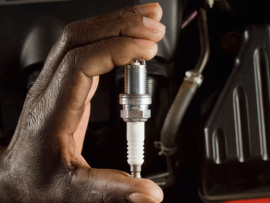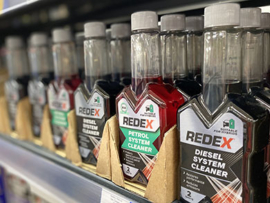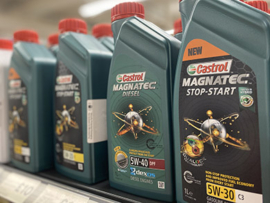Code P0087 is a diagnostic trouble code that indicates a problem with the fuel rail or system pressure being too low. This code is commonly found in vehicles equipped with high-pressure fuel injection systems, particularly those with direct injection systems. Unlike port injection systems that inject fuel into the intake manifold, direct injection systems inject fuel directly into the cylinders at different points in the engine cycle.
To achieve proper fuel injection timing in direct injection systems, high fuel pressure is required. The typical range for high-pressure fuel injection systems is between 200 PSI and over 3,000 PSI, while port fuel injection systems operate at much lower pressures, typically between 10 PSI and 65 PSI.
In vehicles with direct injection systems, there are typically two fuel pumps. The electric low-pressure fuel pump, located in the fuel tank, supplies fuel to the high-pressure fuel pump mounted on the engine. The high-pressure fuel pump, driven by a special camshaft lobe, boosts fuel pressure to over 200 PSI based on the engine control module’s (ECM) commands and driver demand.
The ECM monitors fuel pressure in the system to fine-tune injector pulse-width and optimize fuel delivery. If the ECM detects that fuel pressure is not rising adequately according to its commands, it will trigger the P0087 code, indicating low fuel rail or system pressure. The malfunction indicator lamp (MIL) will also illuminate, and other related codes such as cylinder misfire, air-fuel ratio sensor, or fuel trim codes may be present.
Symptoms and Diagnosis
The symptoms of a P0087 code may include rough running, engine misfires, poor acceleration, decreased fuel economy, and in severe cases, hard starting or failure to start.
To diagnose the P0087 code, several steps can be taken:
Check for fuel leaks: Obvious fuel leaks, such as dripping or the smell of raw fuel, can prevent proper pressure buildup. Repair any leaks found.
Inspect fuel lines for kinks: Some fuel lines, especially plastic ones, are prone to kinking or collapsing, obstructing fuel flow. Straighten or replace any kinked lines.
Examine the fuel filter: Contamination in the fuel filter can obstruct fuel flow. Replace the fuel filter, especially in high-mileage vehicles.
Assess the fuel tank for damage: External damage to the fuel tank can affect the fuel sender, which impacts the low-pressure fuel pump’s ability to intake fuel properly.
It’s important to note that further diagnosis of the high-pressure fuel system requires specialized tools and procedures, which may not be accessible to the average vehicle owner. Therefore, it is recommended to seek the assistance of a qualified technician to accurately diagnose and repair the issue.
Fixes for OBD-II Code P0087
Fixing OBD-II Code P0087, which indicates low fuel rail or system pressure, typically involves addressing the underlying causes that contribute to the issue. Here are some potential steps to resolve the problem:
- Check fuel levels: If you’ve recently run out of fuel, refilling the tank and clearing the code might be sufficient. Ensure there’s enough fuel for proper pressurization.
- Inspect for fuel leaks: Thoroughly examine the fuel lines, connections, and components for any visible fuel leaks. Repair or replace any damaged or leaking parts to restore proper pressure.
- Replace the fuel filter: Over time, fuel filters can become clogged with contaminants, impeding fuel flow and leading to low pressure. Replace the fuel filter to ensure unobstructed fuel flow.
- Test the fuel pressure regulator: The fuel pressure regulator helps maintain optimal fuel pressure. If it malfunctions, it can cause low fuel pressure. Test the regulator’s performance and replace if necessary.
- Inspect the fuel pump: The high-pressure fuel pump might be experiencing issues, such as a faulty pump, worn cam follower, or damaged camshaft. Check the fuel pump’s condition and replace any faulty components.
- Check the fuel lines: Ensure that the fuel lines are free from kinks, collapses, or other obstructions that impede fuel flow. Straighten or replace any damaged lines.
- Verify ECM functionality: In some cases, the issue might lie with the engine control module (ECM). Perform a thorough diagnosis to determine if the ECM is sending accurate commands to the fuel system and replace or reprogram it if necessary.
Related DTCs to P0087
There are some codes that likely would have been shown along with the aforementioned code: P0088, P0089, P0090, P0091, P0092.
FAQs
How much does it cost to fix the code P0087?
Since P0087 can be caused by various factors, the cost of repairs can range from relatively inexpensive to more significant expenses. Here are some potential costs associated with addressing the P0087 code:
Fuel filter replacement: The cost of a fuel filter can range from $10 to $50, depending on the vehicle’s make and model. DIY installation is possible, or you may need to factor in labor costs if you take it to a mechanic.
Fuel pump replacement: High-pressure fuel pump replacement costs can vary significantly depending on the vehicle. On average, you can expect to pay between $500 and $1,500 for parts and labor.
Fuel line repairs: Repairing or replacing fuel lines can range from a simple fix to a more complex task. Costs will depend on the extent of the damage, location of the fuel lines, and the specific vehicle. It’s advisable to consult with a mechanic for an accurate estimate.
Diagnostic fees: If you take your vehicle to a professional technician for diagnosis, they may charge an hourly rate for their time. Diagnostic fees can range from $50 to $150 or more, depending on the shop’s rates.
Other potential costs: Depending on the specific cause of the P0087 code, there may be additional expenses such as replacing faulty sensors, repairing wiring issues, or addressing other related problems. These costs can vary significantly.
It’s important to note that these are general estimates, and actual costs can vary depending on your location and the specific circumstances.
Can I continue driving with the P0087 code?
Continuing to drive with the P0087 code is generally not recommended. There are few reasons to avoid driving: poor engine performance, potential engine damage, fuel economy issues, risk of sudden breakdown.
How is the code P0087 serious?
Since you can continue driving for short distances until you have not got a bad response from the engine, it’s strongly recommended to address the P0087 code as soon as possible.
It’s best to have your vehicle diagnosed by a qualified mechanic who can identify the exact cause of the low fuel pressure. Taking timely action can help prevent further damage and improve overall safety on the road.
We do an efforts to find, research and recommend the best products. So, we may receive commissions from purchases that you make after following the links in our product reviews.








Leave A Comment